“Biotechnology from the Blue Flower” by Anna Dumitriu and Alex May explores the cultural history and morphology of the chicory plant and investigates how new plant breeding methods such as CRISPR gene editing can be used to create future healthcare and food benefits.

Chicory inspired the idea of the Blue Flower in German Romanticism, and became a central symbol of the movement. It inspired Goethe’s concept of the ‘urpflanze’ or original plant in his “Metamorphosis of Plants”. The romantic movement was a reaction to the industrial revolution and held nature and emotion in the highest esteem. Now we are part of a biotechnological revolution, and again the blue flower becomes an important symbol. This time in a more complex position at the interface of nature and technology, central to societal explorations of what may be acceptable in synthetic biology, and how ‘nature’ and ‘natural’ may be defined in the future. Or as Goethe stated “the unnatural that too is natural”.
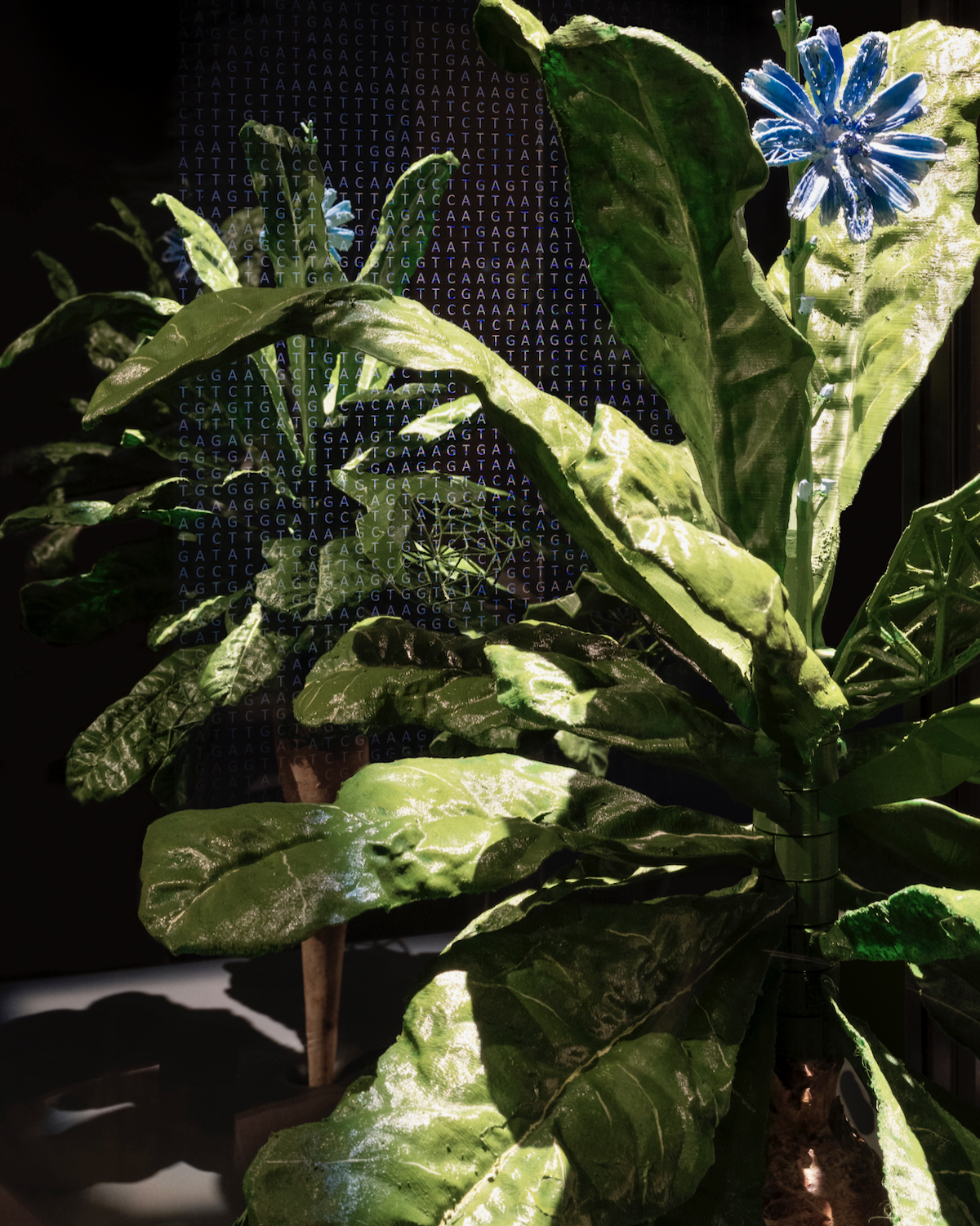
The final installation takes the form of a 3D printed sculpture of the plant based on high resolution photogrammetry scans of the chicory plant clones which the scientists are working with. The artists explore the external and internal morphologies of the plants and roots, playing with the transition between the real and digital wire-frame forms. The sculpture contains relics of the CRISPR modified protoplasts and leaves, some of which the artists created themselves in the lab. Projected behind the sculpture is the chicory genome, edited to remove any repeating DNA sequences (which seem to get added as the plant evolves) in a suggestion of Goethe’s concept of the ‘original plant’.
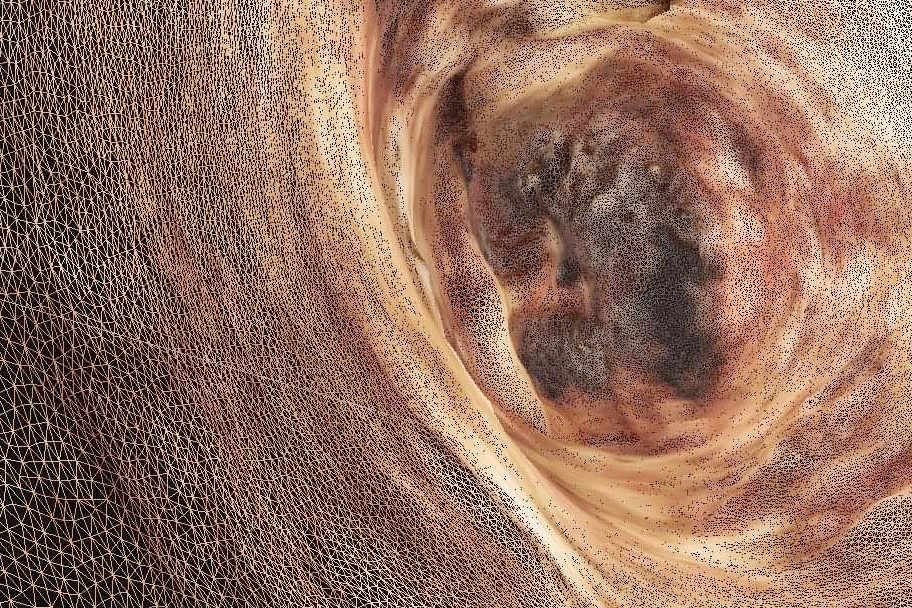
“Biotechnology from the Blue Flower” was created by Anna Dumitriu and Alex May as part of the ASN-AIR program 2018-2022 in the CHIC science labs. The residency commission was awarded through Art Science Node. ASN/ASSF is a partner in the CHIC Consortium, CHIC is a research and innovation project supported through the EU Horizon 2020 funding programme.

Exhibitions and Outcomes
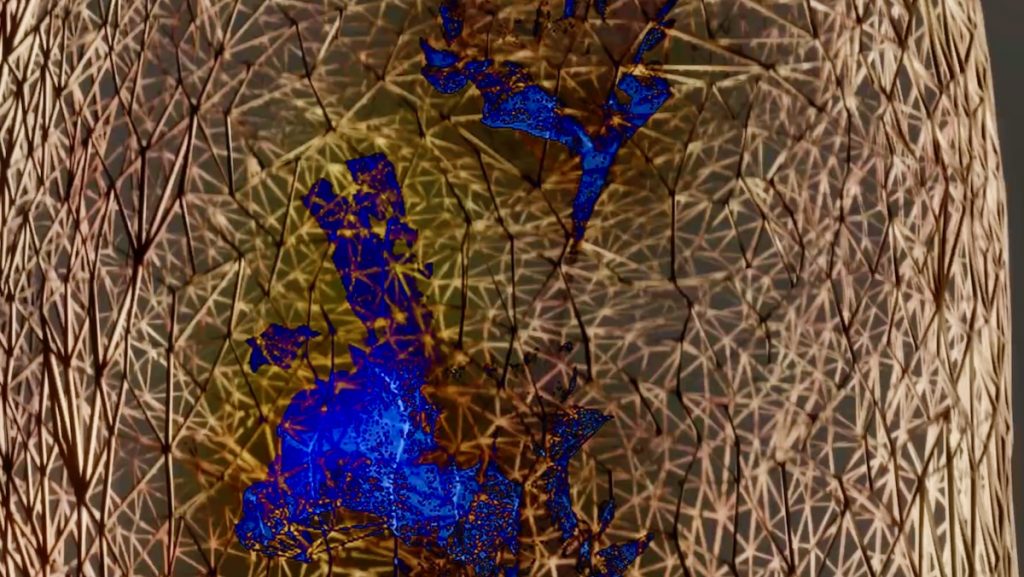
A new commissioned installation entitled “The unnatural that too is natural” “which extends the project “Biotechnology from the Blue Flower” in the form of digital video and series of small sculptures which comprise 3D printed, hand-painted elements and CRISPR modified plant cells, plus the Blue Flower AR app is on show now as part of “Food Fight!” at Michigan State University Museum in East Lansing, USA from 9th January – 29th June 2024. See more about the exhibition here.

“Wunderkammer BioArt” at Kunsthaus Wiesbaden, Germany, curated by Heike Sutter and Hildebrand-Schatt, 6th April to 24th June 2022.
“Darwin’s Paradox: A Decade of Bio Art” at the SVA Flatiron Gallery in New York City, USA, curated by Suzanne Anker and Tarah Rhoda from 28th September until 17th October 2022.
“Gene Cultures“, MIT Museum in Cambridge, USA, curated by William Myers, from 2nd October 2022 until 2024.
“OUR BIO-TECH PLANET: FUTURE OF PLANTS AND HUMANS” at the Botanical Garden in Rome, Italy, curated by Joanna Hoffman from the 24th – 30th October 2022.
A course based on the project was taught at the Goethe University in Frankfurt in the winter semester 2021/22 under the initiative of Professor Dr. Viola Hildebrand-Schat and Heike Sütter. Students of art, microbiology, philosophy and curatorial studies came together in order learn about and discuss this complex topic by bringing together specific specialist knowledge and different perspectives. Writings from this course provided context for the “Wunderkammer BioArt” exhibition at Kunsthaus Wiesbaden.
Biotechnology from the Blue Flower: Augmented Reality App
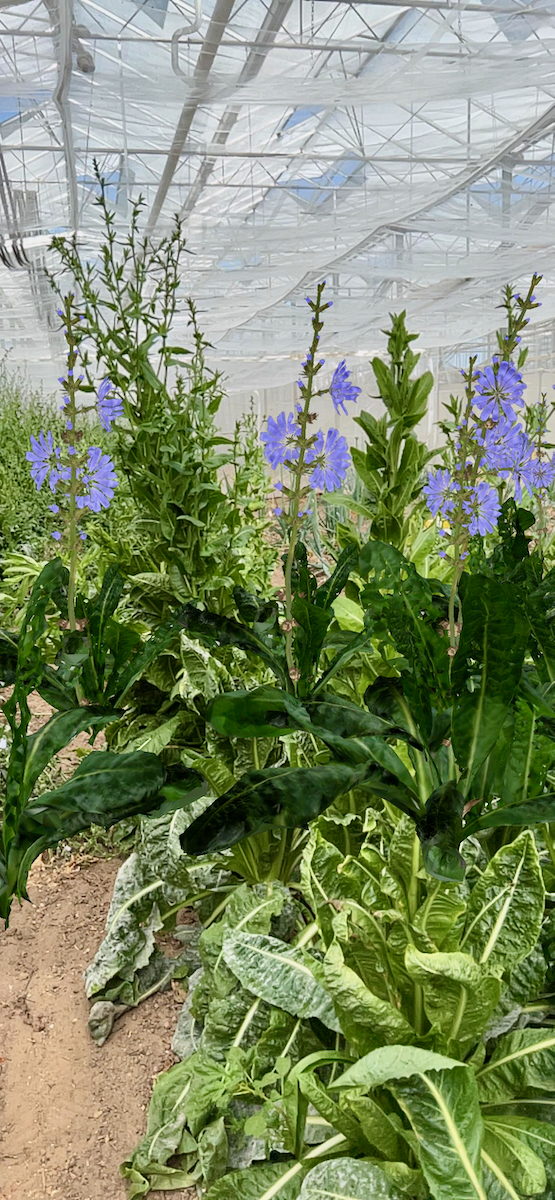
“Blue Flower” a standalone Augmented Reality (AR) app is now available for iPhone/iPad/Android devices http://onelink.to/blueflower. The gene edited plants represented here are not normally allowed to leave the laboratory in many countries but through augmented reality users can transgress the rules, fill the world with them, and take and share photos. The app can also accompany the sculptural installation in exhibitions, such as at Kunsthaus Wiesbaden.
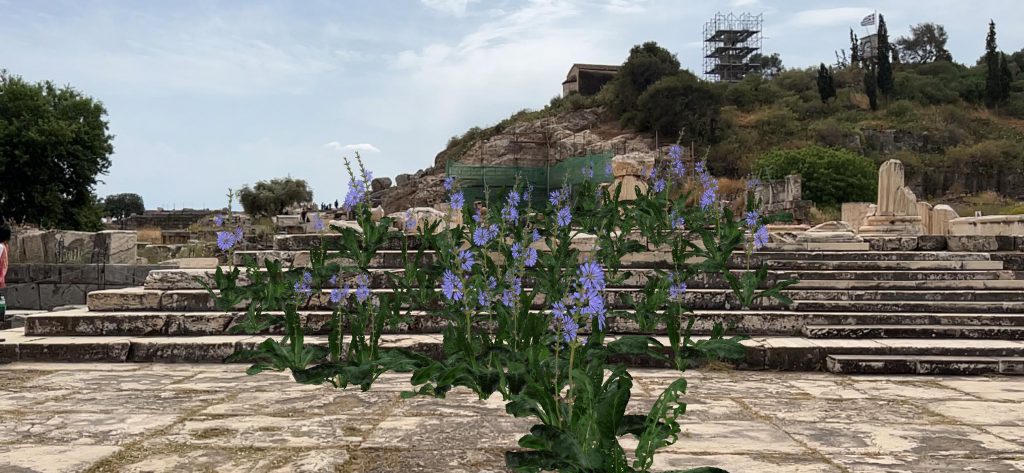
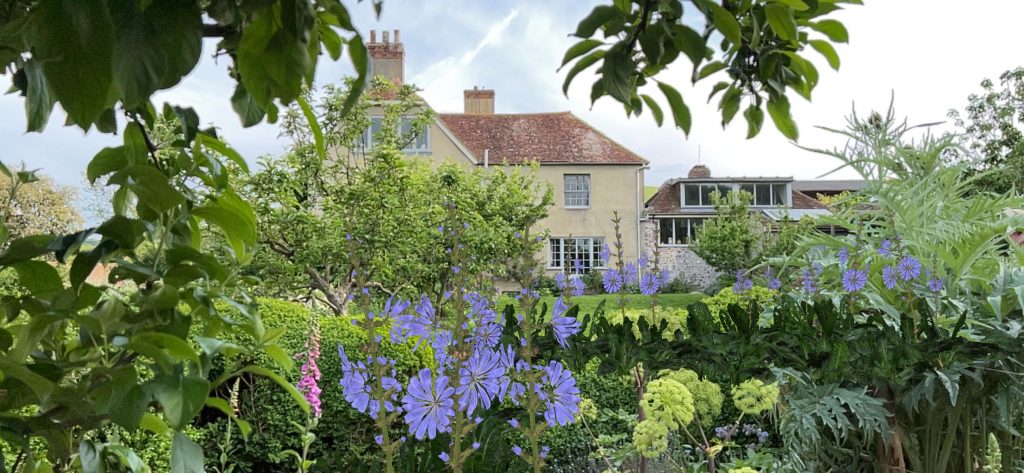
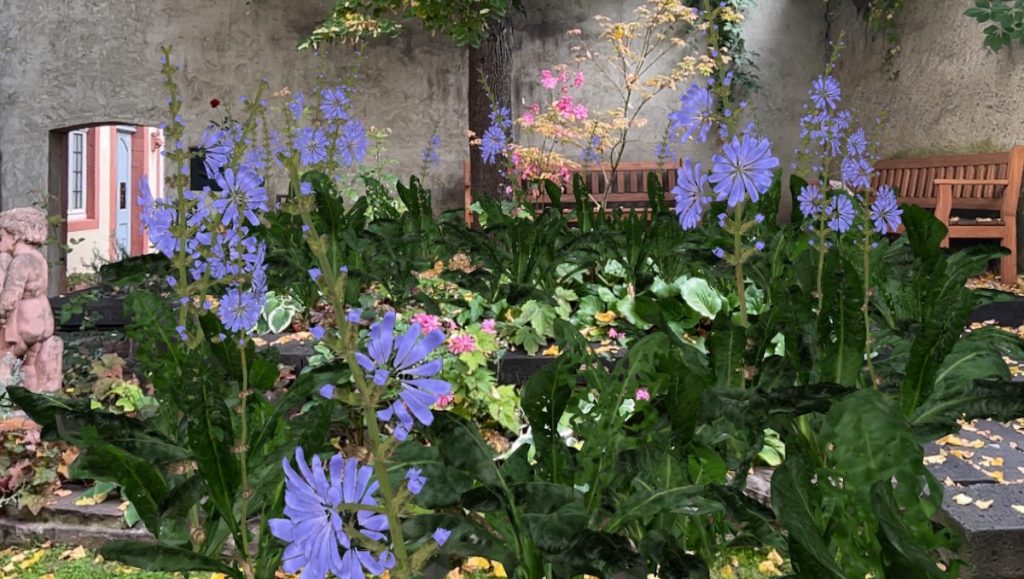
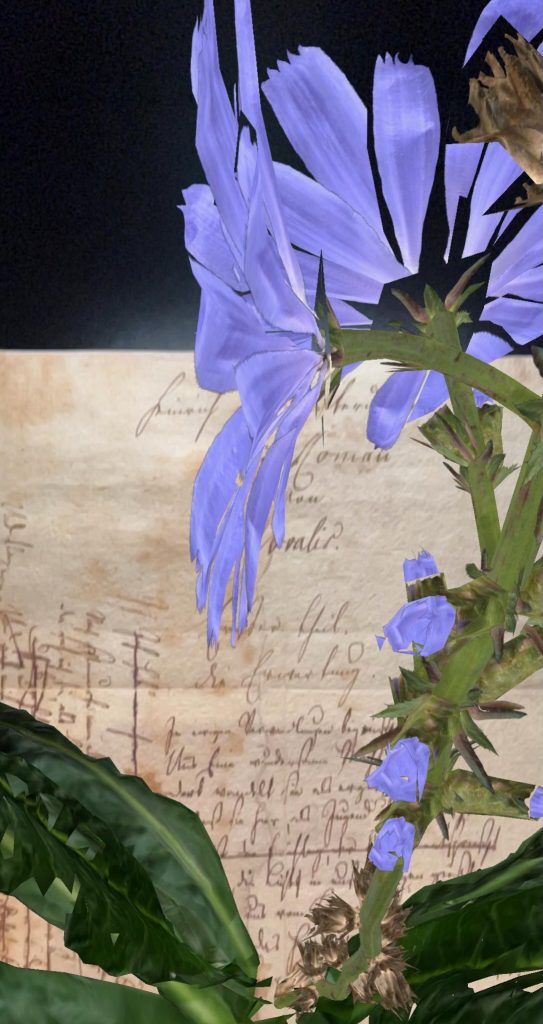
The work was also part of the Art & Science Node app which is available on Google Play and the Apple App store alongside other works. This app was exhibited as part of the 2021 Brighton Digital Festival.
The Residency Process
The artists worked hands-on in the laboratories of the EU CHIC project consortium, including the University of Wageningen and Keygene, to develop the artwork, learning the processes new plant breeding techniques using CRISPR gene editing.



